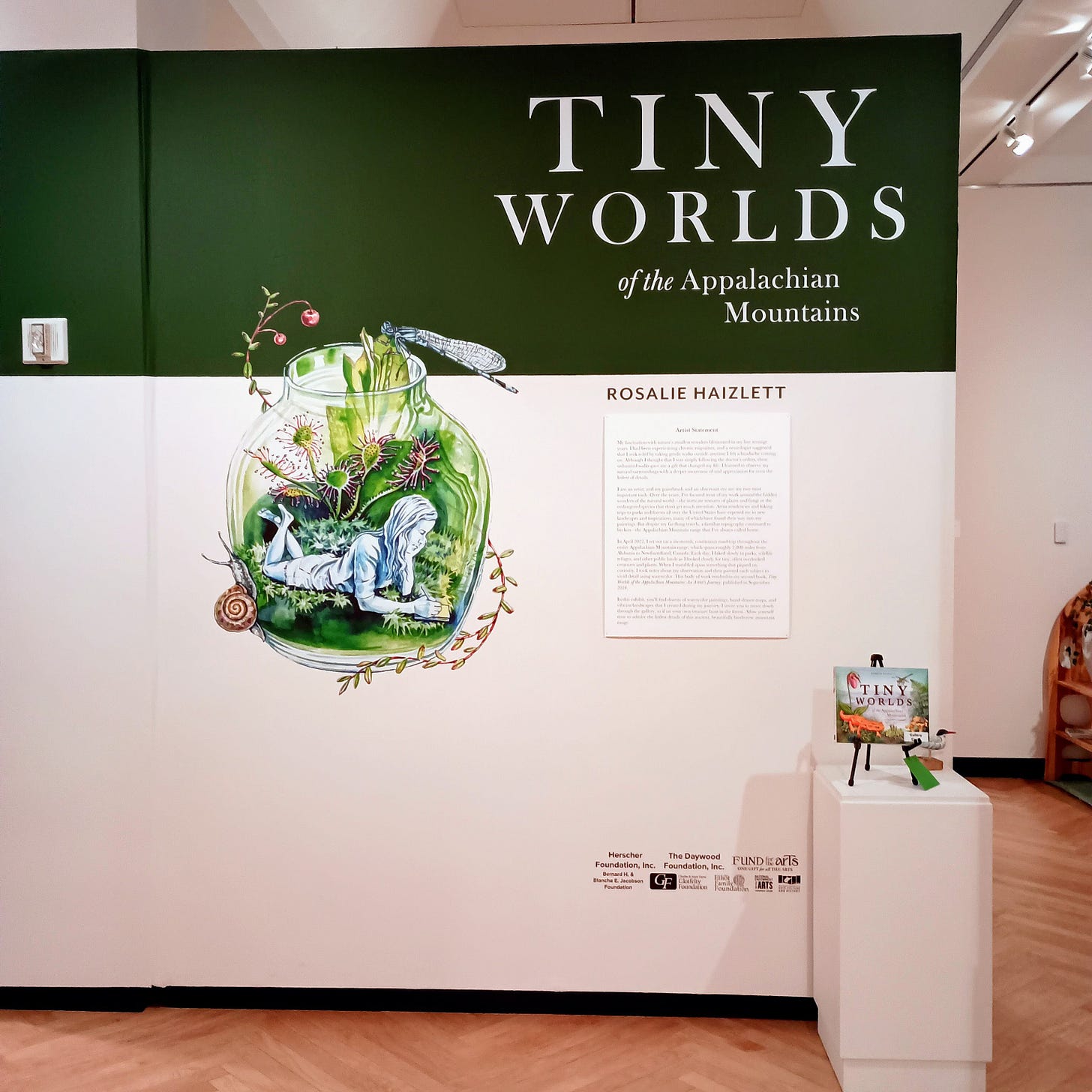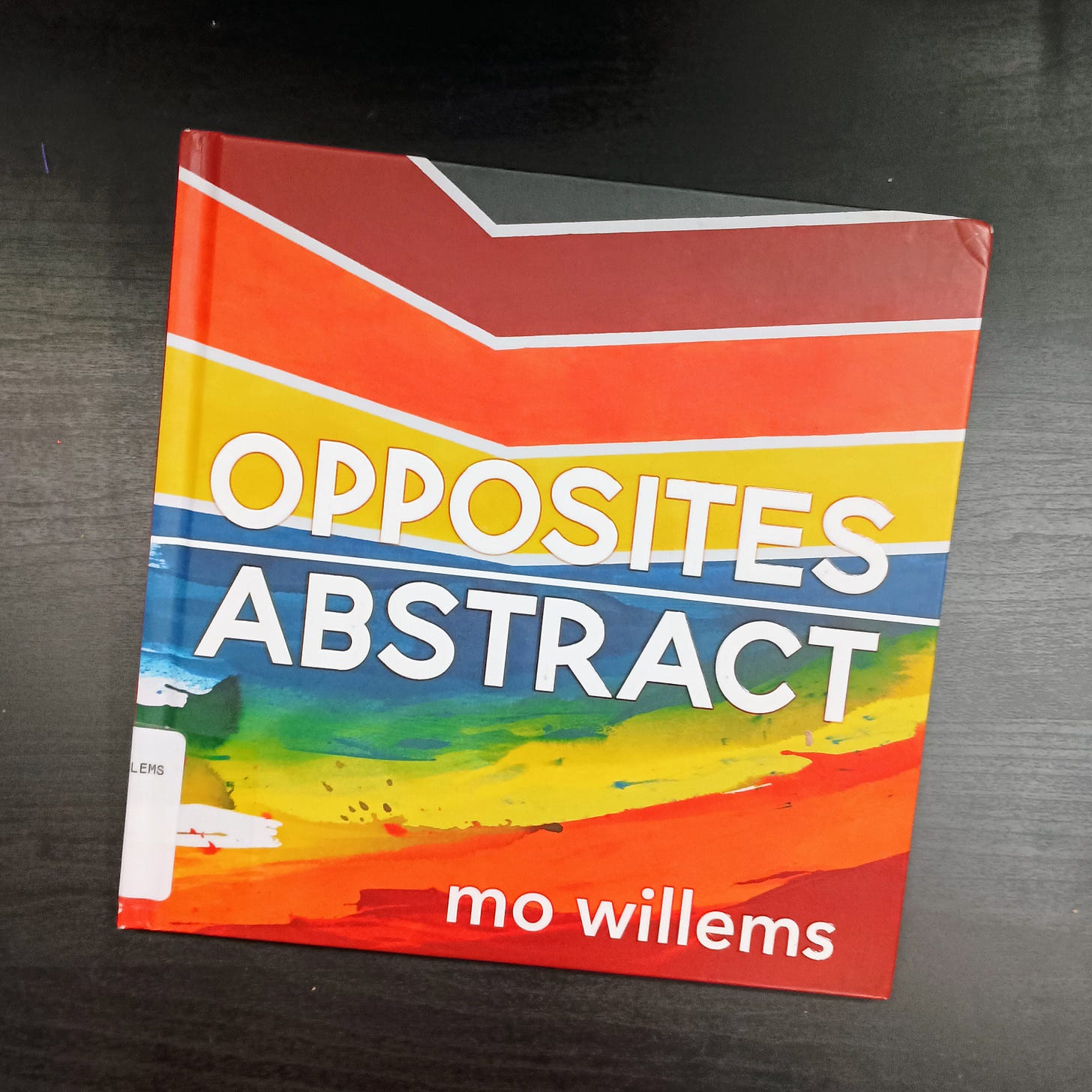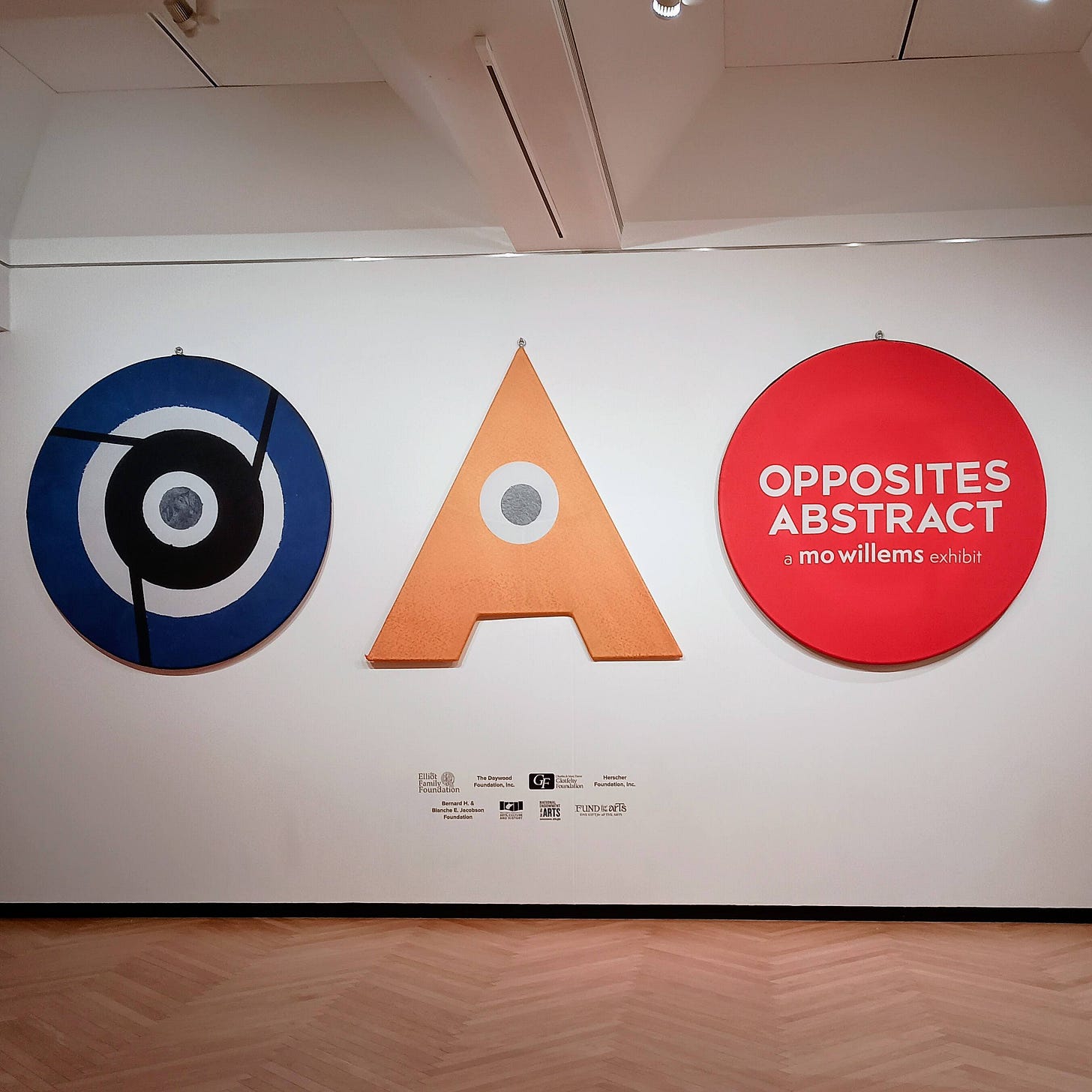Books and Art at the Juliet Art Museum
The Clay Center for the Arts and Sciences here in Charleston is home to the Juliet Art Museum. The museum regularly hosts traveling art exhibits as well as exhibits by regional artists. Earlier this year I picked up Tiny Worlds of the Appalachian Mountains: An Artist’s Journey by Rosalie Haizlett at Plot Twist Books and I was excited to see that art from the book was on exhibit at the Juliet Art Museum. I was pleasantly surprised to see when I got there that the other exhibit was Opposites Abstract, a Mo Willems exhibit of art from the book of the same name. I was just hoping to see one book-based art exhibit, but I got to see two instead.
Title: Tiny Worlds of the Appalachian Mountains: An Artist’s Journey
Author: Rosalie Haizlett
Publisher: Mountaineers Books
Publication Year: 2024
ISBN: 9781680516357
Rating: 5 stars
For this book, Haizlett took six months to travel the Appalachian Trail from Alabama up through the International Appalachian Trail that runs through Newfoundland and other parts of Canada. She didn’t through hike the trail, but hiked several parts of the trail and visited several of the parks along the way. While she was exploring, she took a lot of photos and kept a nature journal that she later used as reference for the paintings in the book.
There is no question that the gorgeous artwork is the centerpiece of this book, but in addition to the art, Haizlett writes little vignettes about her experiences on her nature walks and when and how she encounters the plants and animals she paints. She also writes several reflections about her life in general that she had throughout this six month experience. At the end of each section, she also has some prompts for any readers who want to start their own nature journaling experience and don’t know where to start. I was in it more for the art, but I found the prompts interesting and I think they’d be a good starting point for someone who wanted to experiment with nature journaling. Haizlett and I are around the same age, so I was able to relate to many of her reflections as well.
For me, the best part of this book was Haizlett’s writing and paintings about Canadian Appalachia. I knew the AT ended at Mt. Katahdin, but I kind of thought the mountain range ended there too. I didn’t know that the Appalachian Mountains and the International Appalachian Trail extended into New Brunswick, Nova Scotia, and Newfoundland. I love the idea that there are places where the Appalachian Mountains lead right up to the ocean and where Mountaineers might speak mostly French. While much of the flora and fauna and environments from the other parts of the book looked familiar to me, this part was all completely new. I was interested in Haizlett’s experience of Canadian Appalachian culture and how it is both similar to and different from American Appalachian culture. She also talked about Montreal rock group Appalaches, who I hadn’t heard of, but discovered that I quite enjoy.
The Tiny Worlds exhibit at the Juliet Art Museum opened on August 31st and served as the kickoff event of Haizlett’s book tour for this book. It closes on December 8th, so there are still a few days to get a visit in if you’re interested.
The exhibit is made up of the original watercolor paintings that appear reprinted in the book, so if you read the book before going, you won’t really be seeing anything new. However, the originals were done at a larger scale than they appear in the book, so I enjoyed getting to take a closer look at some of my favorite works from the book and trying to notice details about how the work was created. Overall, I really enjoyed the exhibit and getting to see the art up close, but I found some elements of the display kind of strange—for example, the title cards on the walls didn’t always match the order in which the art was displayed, so if you hadn’t read the book or couldn’t identify something in a painting, they weren’t always helpful. Additionally, there was a display of what might have been Haizlett’s own supplies and pages from her journal that she used for this project, but I didn’t see a title card at all, so I’m not entirely sure—it could just be painting supplies the museum had around that are similar to what she would have used. It didn’t really detract from the exhibit for me, but I thought that those were kind of strange choices for the curator to make.
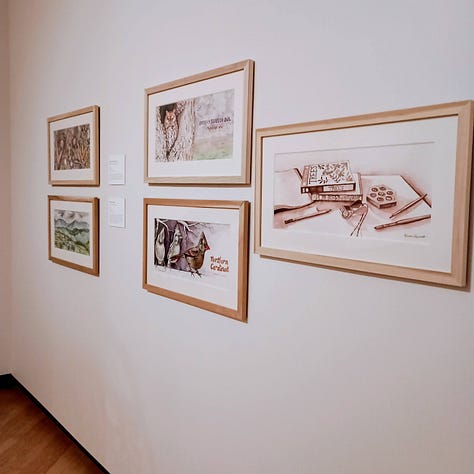

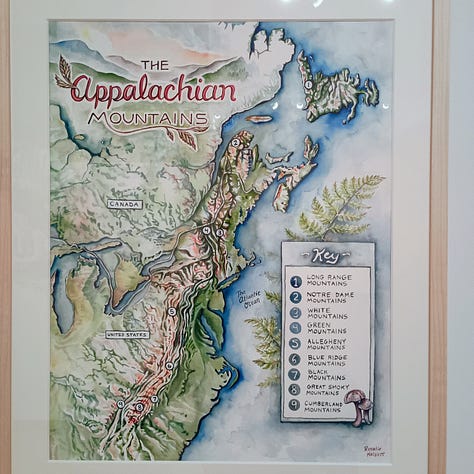
Title: Opposites Abstract
Author: Mo Willems
Publisher: Hyperion Books for Children
Publication Year: 2021
ISBN: 9781368070973
Rating: 5 stars
To be perfectly honest, my whole plan for this post was to focus on Tiny Worlds, and while I know there are usually two exhibits on display in the Juliet at once, I had no idea what the other exhibit was until I got to the museum. Then I was charmed to discover that the other exhibit was Opposites Abstract by Mo Willems and that it was art from and activities inspired by his book of the same title.
Opposites Abstract is packaged and marketed as a children’s book. Willems is well known for his other beloved children’s series about Elephant and Piggie, and my personal favorite, Pigeon. In Opposites Abstract, Willems uses abstract art to explore the idea of opposites. Each page features a painting with an accompanying question, like “Is this dark?” The next spread features another painting asking the opposite “Is this light?” There are only two statements in the book—one in the beginning: “This is starting.” and one at the end: “This is finished.”
The exhibit at the Juliet opened back in September and runs until January 19th. Most of the exhibit is comprised of Willems’s original paintings for the book juxtaposed next to their opposites. However, there are several other elements that are hands-on and I think supposed to be geared toward younger museum goers to help them understand the concepts of abstract art and opposites and inversion (but I had a really fun time with those parts myself).
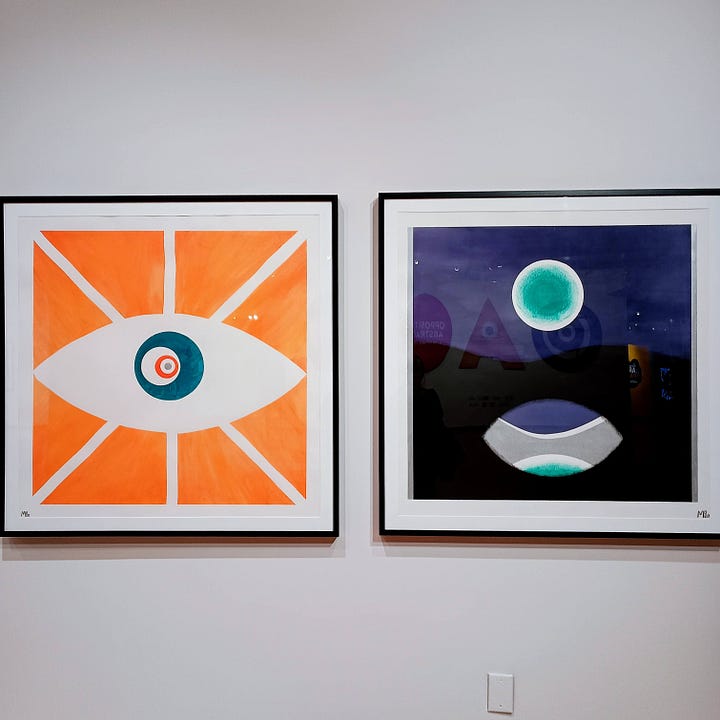

There was also a projector set up playing a short video of Willems talking about the art and the exhibit himself. In the video, he talks about how one of the neat things about abstract art is that it can mean different things to different people and how if you don’t agree with the paintings he made for the opposites, you can make your own. As an English major, this exhibit also had me thinking about what it really means for things to be opposite and different. How we are always taught that opposites are diametrically opposed but how the art can communicate that some things are more like a spectrum or are more similar than they may appear. It also got me thinking about how I would abstractly depict some of these concepts. In many cases, it probably wouldn’t have occurred to me to do it the way Willems did, but after reading the titles, I could totally understand what he was getting at.
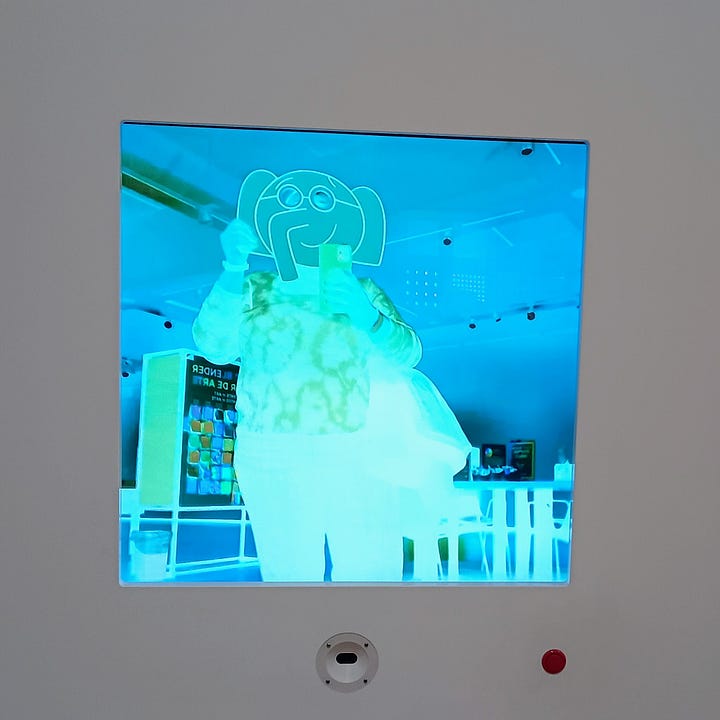
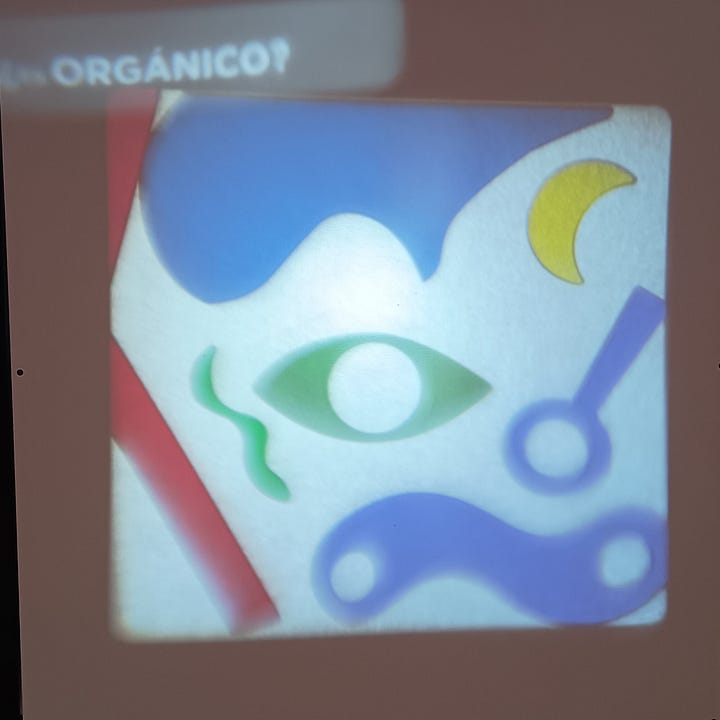
This exhibit also had two really cool features that I hadn’t seen in Charleston before. One was that the title cards were in both English and Spanish. I have seen that done at other museums, but not here. I’m not sure if the title cards travel with the exhibit or what, but I thought seeing the artwork titles in both English and Spanish was cool and played into the theme of things that seem to be opposites. The other was a large plastic flipbook of the book Opposites Abstract that featured all of the art from the exhibit. The text in the book was written in Braille, but the illustrations were also rendered tactilely as well, so if a visitor couldn’t see the art, they could feel the book and experience the different lines and colors that way. I could see the art just fine, but experiencing the tactile experience of the art added an extra layer to exploring abstract art and the idea of opposites: is feeling the opposite of seeing or are they more related than that?
I hadn’t been expecting to see this exhibit when I visited the museum, but I ended up enjoying it more than the exhibit I had originally gone to see. I think it is also set up really well to keep the interest of children while getting them to engage with the concept, but I may be wrong. I visited on a weekday morning and the only other people at the museum were a kid who was probably about 4 and his adults. He spent the whole time screaming about how much he hates the museum, so maybe it wasn’t as enticing to him as it was to me…or maybe he just had an opposite way of enjoying the exhibit.





